- Joined
- Oct 9, 2007
- Messages
- 47,895 (7.38/day)
- Location
- Dublin, Ireland
| System Name | RBMK-1000 |
|---|---|
| Processor | AMD Ryzen 7 5700G |
| Motherboard | Gigabyte B550 AORUS Elite V2 |
| Cooling | DeepCool Gammax L240 V2 |
| Memory | 2x 16GB DDR4-3200 |
| Video Card(s) | Galax RTX 4070 Ti EX |
| Storage | Samsung 990 1TB |
| Display(s) | BenQ 1440p 60 Hz 27-inch |
| Case | Corsair Carbide 100R |
| Audio Device(s) | ASUS SupremeFX S1220A |
| Power Supply | Cooler Master MWE Gold 650W |
| Mouse | ASUS ROG Strix Impact |
| Keyboard | Gamdias Hermes E2 |
| Software | Windows 11 Pro |
Alpenföhn today introduced the Matterhorn Threadripper, a variant of its popular Matterhorn series tower-type CPU air coolers, which supports AMD socket TR4 (SP3r2). The cooler comes with an enlarged copper base, which offers full coverage of the Ryzen Threadripper IHS. Six 6 mm-thick copper heat pipes convey heat from this base through the aluminium fin-stack.
The cooler ships with a re-tuned Wingboost 2 120 mm fan, which spins between 500 - 1,500 RPM, pushing up to 106 m³h of air, with noise output as low as 18.2 dBA. Both the fins and the heat pipes feature a ceramic black coating that works to increase surface area for heat dissipation. A tube of Alpenföhn Permafrost TIM comes included. Measuring 138 mm x 100 mm x 158 mm (WxDxH), the cooler weighs about 1 kg. The company did not mention the thermal load limits of the cooler, and whether it's recommended for even the 250W TDP models such as the Threadripper 2990WX. The company didn't reveal pricing.
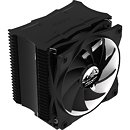
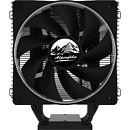
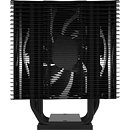
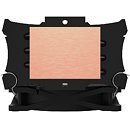
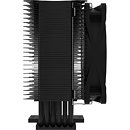
View at TechPowerUp Main Site
The cooler ships with a re-tuned Wingboost 2 120 mm fan, which spins between 500 - 1,500 RPM, pushing up to 106 m³h of air, with noise output as low as 18.2 dBA. Both the fins and the heat pipes feature a ceramic black coating that works to increase surface area for heat dissipation. A tube of Alpenföhn Permafrost TIM comes included. Measuring 138 mm x 100 mm x 158 mm (WxDxH), the cooler weighs about 1 kg. The company did not mention the thermal load limits of the cooler, and whether it's recommended for even the 250W TDP models such as the Threadripper 2990WX. The company didn't reveal pricing.





View at TechPowerUp Main Site






